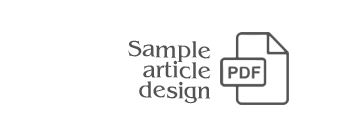PRODUCTION OF ARTEMIA AS AN OPTIMAL FOOD RESOURCE FOR REARING FISH LARVAE
PRODUCTION OF ARTEMIA AS AN OPTIMAL FOOD RESOURCE FOR REARING FISH LARVAE
DOI:
https://doi.org/10.55956/NJTE1112Keywords:
Aquaculture, Artemiasalina, nutritional resource, cultivation of fish larvae, viability, nutritional value, cultivation technology, productionAbstract
In aquaculture, the use of Artemia as an optimal nutrient resource for fish fry is an object of growing interest. The advantages of using Artemia include the possibility of mass cultivation under controlled conditions, the possibility of long-term storage in frozen form and resistance to external environmental conditions. Artemia, belonging to crustaceans, is a rich source of protein, fat, vitamins and minerals necessary for the healthy development of fish larvae. Due to the high content of unsaturated fatty acids, omega-3 and omega-6, fry contribute to the development of a healthy immune system, which reduces the risk of many diseases. Their small size and mobility make them available for cultivation, which ensures a high level of quality and reduces feed consumption. The results of the study show that the use of crustaceans as the main food source for fish farming contributes to improving the life, growth and health of fry. This makes them a successful type of feed in aquaculture and an optimal resource for fish farming. Further research in this area can lead to increased efficiency of fish farming, development of practices and improvement of the overall potential of the aquaculture industry. This article discusses the advantages of using Artemia, its biological value, ease of cultivation and versatility in the nutrition of various fish larvae. Various methods and technologies of growing Artemisia are analyzed, as well as their application in breeding species of fish larvae. Special attention is paid to optimizing the maximum growth of fish larvae and feeding conditions.
References
1. Лагуткина, Л.Ю.Органическая аквакультура как перспективное направление развития рыбохозяйственной отрасли (обзор) [Текст] / Л.Ю. Лагуткина, С.В.Пономарёв// Сельскохозяйственная биология. – 2018. – Т. 53. – №. 2. – с. 326-336.
2. Abatzopoulos T. J. et al. (ed.). /Artemia: basic and applied biology/. – Springer Science & Business Media, 2013. – Т. 1.
3. Coutteau P. Manual on the production and use of live food for aquaculture. //P. Coutteau, Lavens P. Microalgae, P. Sorgeloos// FAO Fisheries Technical Pa-per. – №. 361. – Rome, FAO. – 1996. – p. 10 – 13.
4. Мухитова,М.Э. Проблемы культивирования стартовых живых кормов для аквакультуры [Текст] / М.Э. Мухитова, Е.М.Романова,В.Н.Любомирова // Международный научно-исследовательский журнал. – 2017. – №. 1-2 (55). – c. 13-15.
5. Новоселова,Н.В. Живые корма – важнейшее звено в биотехнологии выращивания морских рыб. Некоторые особенности культивирования морского зоопланктона [Текст] /Н.В.Новоселова// Труды Южного научно-исследовательского института рыбного хозяйства и океанографии. – 2012. – № 50. – с. 134-151.
6. Литвиненко,Л.И. Жаброногие рачки рода Artemia Leach, 1819 в гипергалинных водоемах Западной Сибири (география, биоразнообразие, экология, биология и практическое использование)[Текст] /Л.И.Литвиненко // Пермь; 2009.;6 (12): с.1409–1415
7. Белых,О.А.Особенности выращивания живого корма Artemia salina в аквакультуре [Текст] / С.Е.Розанов // Известия Байкальского государственного университета. – 2021. – Т. 31. – №. 3. – с. 400-406.
8. Костромин, Е.А. Влияние факторов среды (солёность, температура, освещение) на инкубацию Artemia salina в эксперименте [Текст] / Е.А.Костромин // Известия Санкт-Петербургского государственного аграрного университета. – 2016. – №. 42. – с.164-168.
9. Романова,Е.М.. Факторы, регулирующие онтогенез A. salina и ее продуктивность при культивировании in vitroФакторы, регулирующие онтогенез A. salina и ее продуктивность при культивировании in vitro[Текст]/В. В.Романов,
В.Н.Любомирова,Э.Б.О.Фазилов.//Вестник Ульяновской государственной сельскохозяйственной академии. – 2022. – №. 3 (59). – с. 148-153.
10. Тысяк,П.В. Влияние факторов среды на инкубацию артемии (artemia salina) [Текст]/Т. А.Нечаева //Вестник Студенческого научного общества. – 2018. – Т. 9. – №. 1. – с. 220-222.
11. Корентович,М.А. Усовершенствование методов инкубации и биоинкапсуляциинауплиусовартемии[Текст]/Е.А.Сироткина,М.Н.Бронников//Вестник рыбохозяйственной науки. – 2017. – Т. 4. – №. 1. – с. 4-19.
12. Московко,В. Е.Динамика роста и развития жаброногого рачка (ArtemiaSalina) при кормлении живыми и сухими кормами [Текст]/А.А.Набокина, Т. А.Геворгян, Пахлеванян А.А. //Водные биоресурсы: рациональное освоение и искусственное воспроизводство. – 2021. – с. 127-132.
13. Воронов,П. М. Способы заготовки и очистки яиц артемийArtemiasalina L.[Текст] – 1973.
14. Гусев,Е. Подсушивание и декапсулированиеяицартемиисалина //Рыбоводство и рыбное хозяйство.[Текст]/ Е.Гусев. // – 2006. – №. 2. – с. 15-18.
15. Madkour,K., Dawood,M.A.O., Sewilam,H. The use of artemia for aquaculture industry: An updated overview //Annals of Animal Science. – 2023.
Downloads
Published online
Issue
Section
License

This work is licensed under a Creative Commons Attribution-NonCommercial 4.0 International License.

